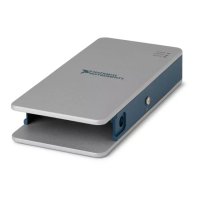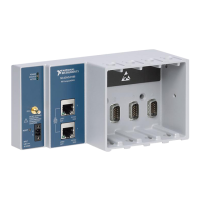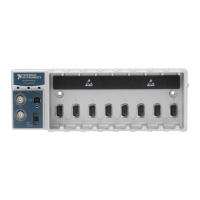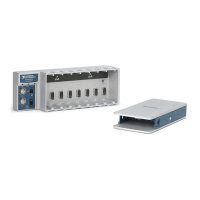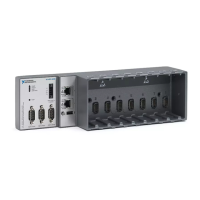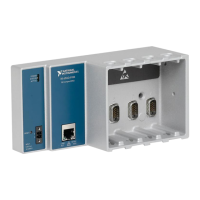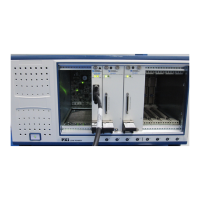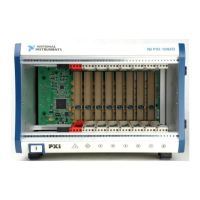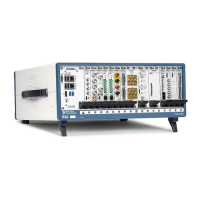© National Instruments | 2-1
2
Networking
This chapter explores the internal Ethernet switch and recommended networking topologies for
the cDAQ chassis.
Note Refer to the Installing the cDAQ Chassis and Connecting to a Real-Time
Controller sections of Chapter 1, Getting Started with the cDAQ Chassis, for
information about connecting the cDAQ chassis to a host computer or host real-time
controller.
Internal Ethernet Switch
The cDAQ-9185/9189 chassis feature a full hardware-accelerated internal Ethernet switch for
greater performance, wiring flexibility, and compatibility over standard Ethernet ports. The
Ethernet switch exposes two Ethernet ports to the user. Either port can be used to connect the
chassis to the network. The two ports can be used to connect multiple chassis in a daisy-chain
topology. The switch also supports the Rapid Spanning Tree Protocol (RSTP) algorithm,
enabling ring topologies. Refer to the Topology Options section for more details.
IEEE 802.1AS-2011 Precision Time Protocol
The internal Ethernet switch is an 802.1AS time-aware bridge, compatible with the
IEEE 802.1AS-2011 Precision Time Protocol. It can synchronize local analog input, analog
output, digital input/output, and counter/timers to other chassis across an 802.1AS subnet. It can
also serve as a bridge, synchronizing 802.1AS devices that are attached to each of the two ports.
Refer to the Synchronization across a Network section, of Chapter 7, Digital Routing,
Clock Generation, and Synchronization, for more details.
Note cDAQ-9185/9189 chassis use the IEEE 802.1AS protocol over the network
to synchronize. The IEEE 802.1AS protocol is an IEEE 1588 profile, but is
incompatible with other IEEE 1588 profiles. These cDAQ chassis can not
synchronize over the network with devices that use protocols or IEEE 1588 profiles
other than IEEE 802.1AS.
Artisan Technology Group - Quality Instrumentation ... Guaranteed | (888) 88-SOURCE | www.artisantg.com
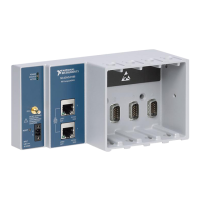
